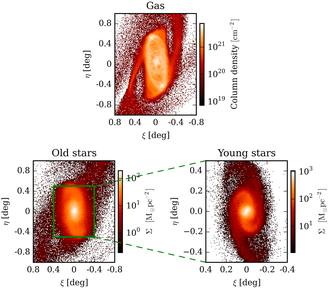
The Triangulum Galaxy (M33) is the second brightest galaxy on the sky and one of the most distant objects that can be seen with a naked eye. Besides the Andromeda Galaxy (M31) and our Milky Way, M33 is the third largest galaxy in the so-called Local Group of galaxies. Both the proximity between M33 and M31 and the distorted structure of the M33 disk suggest that the galaxies interacted tidally with each other in the past and the effect of such interaction is presently observed as warping of the outer part of the M33 disk.
Marcin Semczuk and his collaborators from the Copernicus Center of the Polish Academy of Sciences, Universite Bourgogne – Franche-Comte, University of Wisconsin and Laboratoire d'Astrophysique de Marseille performed hydrodynamical simulations of a possible interaction between M33 and M31. In their model tidal forces originating from M31 were able to warp the gaseous and stellar disks of M33 in a way that resembles the observed features. In addition to the tidal forces, also the interaction with the hot gas halo of M31 had a great impact on the distortions of the edges of the gas disk of M33. Besides the warping of the M33 disk out of its plane, tidal forces induced the two-armed spiral structure in M33, similar to that observed in the real galaxy. A close passage between the galaxies also increased the star formation activity in M33, which was previously observed as well and provides an additional argument in favour of the interaction scenario of the two galaxies.
The results were obtained as part of the project "Dynamics and morphology of interacting galaxies" funded by the National Science Centre within the Maestro program. The article describing these findings „Tidally induced morphology of M33 in hydrodynamical simulations of its recent interaction with M31" was recently accepted for publication in The Astrophysical Journal.
The figure presents the sky projections of three components of the disk of M33 (gas, old and young stars) from the performed simulations.






